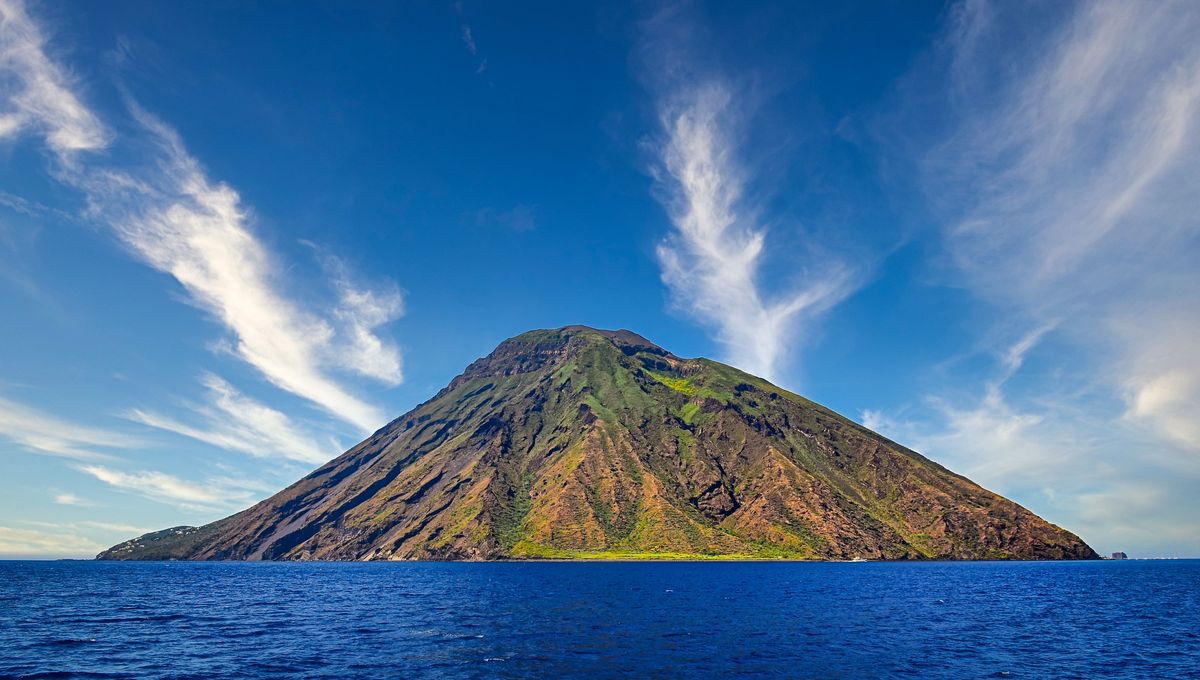
Most of the major conditions required for RNA to replicate, possibly the key stage in kick-starting life, were probably met in rock pores on volcanic islands not long after Earth’s formation. The finding offers a possible explanation for one of the more puzzling aspects of life’s appearance and could shift the focus of efforts to reconstruct the rest of the process.
For many years, scientists seeking to identify where life began have debated two models. One, taking after Darwin, proposes a warm little pond, with amino acids likely provided by meteorites. The alternative model favors hydrothermal vents on the sea floor, where energy and nutrients are abundant. The debate is significant for where we should be focusing our search for life on other worlds. Europa and other moons with internal oceans may well have hydrothermal systems similar to Earth’s, but lack concentrating ponds. Mars, on the other hand probably once had small bodies of surface water, but may not have been as volcanically rich.
However, Ludwig-Maximilians-Universität PhD student Philipp Schwintek has thrown a new contender into the mix; porous rocks on volcanic islands. Rather than standard peer review, Schwintek and co-authors’ work has undergone the controversial “reviewed preprint” process being trialed by eLife, which has faced criticism when used for other high-profile work.
At any location, it is thought likely RNA replication preceded the rest of what we consider life. This requires RNA strands to become double-stranded before separating. Although there are many other questions about how this could occur from a non-living system, one stage biochemists have focused on is strand separation, which can happen easily under certain conditions, but not those necessary for everything else. Specifically, RNA needs lots of magnesium salt and nucleic acids if it is to replicate, but this hinders strand separation.
Temperature changes have been the favored method to achieve cycling between conditions where separation and replication can occur, but heat degrades nucleic acids. The thermal window for the process looks troublingly narrow, particularly when you consider that temperatures would need to either cycle fairly rapidly, or for warm and cool areas to sit side-by-side.
Schwintek and colleagues sought a cycle that didn’t require large temperature fluctuations. “We investigated a simple and ubiquitous geological scenario where water movement through a rock pore was dried by a gas percolating through the rock to reach the surface,” he said in a statement. “Such a setting would be very common on volcanic islands on early Earth which offered the necessary dry conditions for RNA synthesis.”
The team made a model of a volcanic rock pore partially filled with water. The water evaporated at the point where it encountered gas, which in turn partially dissolved within the water, producing currents in the process.
The team added tiny beads to track the water’s movements and used short fragments of DNA that glow for easy visibility.
“Our expectation was that continuous evaporation would lead to an accumulation of DNA strands at the interface,” Schwintek said. “Indeed, we found that water continuously evaporated at the interface but the nucleic acids in the aqueous face accumulated near the gas/water interface.” Within an hour, 30 times as much DNA was concentrated at the border with the gas as elsewhere in the system.
This suggests that even on a planet where nucleic acids were in short supply, they could become sufficiently concentrated near gas/water boundaries for replication to take place. Strands could not separate in that environment, but heat is not the only thing that could change that – a loss of salt could do the same thing.
“We hypothesized that the circular fluid flow at the interface provided by the gas flux, alongside passive diffusion, would drive strand separation by forcing the nucleic acids through areas with different salt concentrations,” said senior author Professor Dieter Braun.
FRET spectroscopy reveals whether DNA strands are bound or separated, and the team confirmed their predictions: the strands bonded near the gas-water interface under still conditions, but separated when water flowed upwards. Salt concentrations fell three-fold under the influence of small vortices at the surface, enough to allow separation to occur away from the air boundary.
Encouraging as these observations were, only a small area near where gas and water met had suitable concentrations of nucleic acids, raising questions as to whether this would have been enough to initiate the process. The team took the further step of attaching fluorescent dye to their nucleic acids and adding enzymes that synthesize double-stranded DNA to kickstart the process.
Within two hours, Schwintek and co-authors report, the glow became brighter, indicating replication was occurring, but this stopped when the exchange of gas and water was halted.
“In this work we investigated a plausible and abundant geological environment that could trigger the replication of early life,” Braun concluded. “We considered a setting of gas flowing over an open rock pore filled with water, without any change in temperature, and found that the combined gas and water flow can trigger salt fluctuations which support DNA replication.”
This of course does not prove life began under these circumstances; that may take a time machine. Moreover, we know the model did not accurately replicate the conditions in which life evolved. The team used ordinary air as their gas, including oxygen that would not have been present at the time. The enzyme the team used to trigger DNA double-stranding is the product of living things, and would not have existed on Earth to assist the first RNA. Nevertheless, if the findings survive more thorough assessment by other scientists, they will make it necessary to consider porous rocks on volcanic islands along with the previous favorites.
The preprint is open access on eLife.
Source Link: Volcanic Islands Had The Conditions For RNA To Replicate, Initiating Life